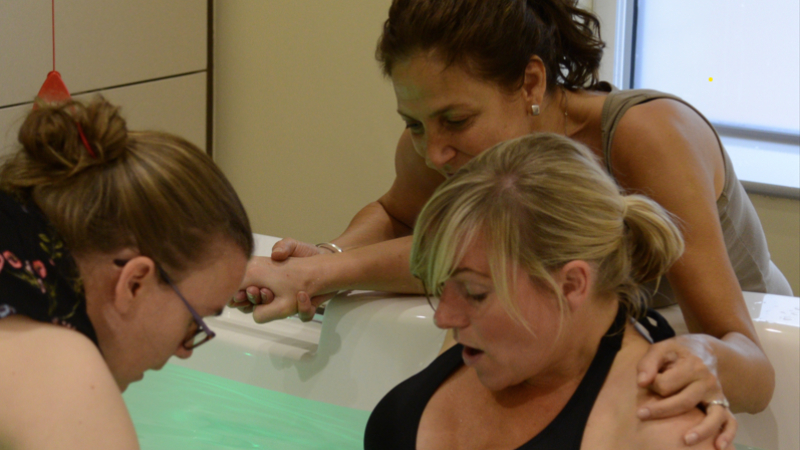First global immersion during labour and water birth conference set to take place at Oxford Brookes

An international conference focusing on the use of birthing pools during labour and/or birth will be held at Oxford Brookes University.
The SPLASH (Sharing Pooling Learning Advocacy Safety Holistic) conference has been organised by Dr Ethel Burns, Senior Lecturer in Midwifery at Oxford Brookes University, and Dr Claire Feeley, Lecturer at King’s College London, and will bring together international multidisciplinary maternity professionals and academics.At the event speakers will share the best available evidence, discuss issues of inequity and how to overcome the challenges that some mums-to-be face in accessing birthing pools. The findings will inform national guidance and policy for the future use of birthing pools. It will also raise awareness of the health benefits of labouring and/or birthing in water.
The conference on 6 June comes just weeks after the findings of the first UK enquiry into birth trauma. The inquiry heard the stories of 1,300 people who had experienced traumatic births in NHS maternity wards.
Dr Burns said: “Enabling more people to access a birth pool is one way we can support the wellbeing and safety of expectant parents and their newborns.”
Dr Burns has spent her career as a water birth pioneer, advocating for people to have access to a birthing pool if they would like to labour and/or give birth in water. In 1990 Dr Burns played a central role in introducing the first plumbed-in birthing pool in an NHS maternity unit in Oxford.
Her research has led to greater understanding of how being immersed in water offers key benefits to mothers and their babies during childbirth.
During the conference a new e-learning tool will be launched to help midwives estimate blood loss during water births.
The estimATE tool was created and tested by two of Dr Burns’ MSc midwifery students for their dissertation projects. It aims to teach midwives how much blood volume in a birthing pool is safe and when they should call for a medical intervention.
Dr Burns said: “We created the estiMATE online tool with professionally-created videos filmed in real time, using live models and a range of blood volumes for an authentic simulation.
“The tool is based on the best available evidence and we’ve included tips that will help midwives during water births, but the information could be just as useful for births out of the water.”
Three days before the conference a small, international group of academics will meet at Oxford Brookes to work on Water Immersion for Women with Complexity (WICIC), an international collaboration feasibility study. The study’s outcomes will show maternal risk factors and clinical guidance for birth pool use.
Dr Feeley said: “We are looking at reducing barriers to birth pool access for women where there may be a risk. For example, someone with a larger body, gestational diabetes or a previous caesarean section who is experiencing a straightforward pregnancy.
“These characteristics shouldn’t prevent a woman from experiencing the relaxation and agency of labouring and giving birth in water.”
It is anticipated that the feasibility study will help to inform a larger, funded study into birth pool use.
